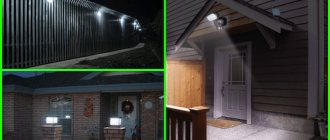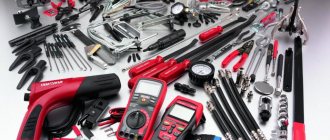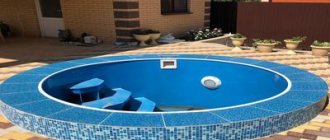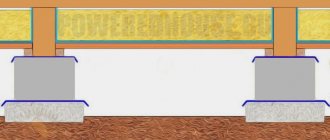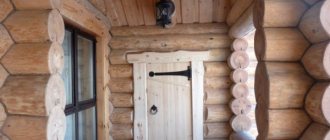Most residents of our vast Motherland, one way or another, face the problem of summer heat! Each of us understands that the best salvation from the heat in the apartment is a split system. The process of purchasing it is accompanied by two main questions: where to install the air conditioner in the apartment and which model to choose? Today I will tell you about the most successful options for the location of the air conditioner.
When we are just planning to purchase a “split”, many have no idea where in the apartment it should be located. For the first time, we think about where it is even possible to place the device so that it works correctly and efficiently. Many people have two versions in their heads:
- the first is the installation of one large air conditioner for the entire apartment (usually somewhere in the corridor);
- the second version is the installation of one or more split systems in certain rooms.
I stick to the second option, when the “split” is calculated for one room. And it’s even better when its power takes into account a small margin. Then the neighboring rooms can be partially cooled.
No. 1. Types of air conditioners
Air conditioners are different, and therefore the rules for their placement are different. Without going into details and features of choice, we will note only the main types of cooling devices that can be used in a home:
- mobile air conditioner - this is a small but quite heavy (30-50 kg) device, placed on the floor, can be easily moved around the room and apartment, it can even be transported to another house. A mandatory element of the design is a hose through which hot air is discharged to the street. As a rule, no questions arise regarding the installation of such an air conditioner. The main thing is that cold air does not blow on people, but if something happens, its direction can be easily corrected. The main disadvantage is a lot of noise;
- window monoblock can only be installed in a window opening, as its name indicates. Such devices are not particularly effective, they take away light and spoil the appearance of the window, so they are rarely installed recently;
- split system – the most popular type of air conditioner today. Consists of two blocks, internal and external. The placement of the indoor unit, as a rule, raises the most questions, so we will pay maximum attention to this topic.
Place the indoor unit near a window
The reason is that it is easier to route the route from the indoor unit to the outdoor unit and you will not have to overpay for additional meters of wire installation. The farther from the window, the more expensive. In addition, if you do install an air conditioner after finishing, a box with hidden wires along the entire wall will definitely become something that will ruin the interior.
Photo: Instagram _marina_ky
- Technique
How to choose a split system: we understand the important characteristics and nuances
No. 2. Basic rules for installing an air conditioner in an apartment
Anyone who is going to equip their home with an air conditioner is primarily concerned with the issues of choosing a device that is suitable for its technical characteristics. The widest range of climate control equipment is presented on the websites of online stores, and the employees of the selected company will help you choose the most suitable model, carry out high-quality installation of the air conditioner and will be able to provide further maintenance of the equipment (cleaning, repairs, etc.). Of course, you will have to decide on the location of the air conditioner in the apartment
To ensure that the operation of the air conditioner is completely safe for health, follow these rules :
- cold air should not fall on the bed, sofa, desk and other places where household members spend a long time. The maximum concentration of cold air is observed at a distance of 2-3 meters from the air conditioner, then the coolness dissipates;
- the optimal distance between the ceiling and the upper boundary of the indoor unit of the split system is 10-15 cm. Warm air is taken from the apartment through the upper part, which is why it is so important that there is enough space left for the unhindered circulation of air masses;
- a distance must be maintained between the air conditioner and the furniture If the installation is carried out above the cabinet, then there should be 70-100 cm of space between it and the ceiling. There should be no pieces of furniture within a radius of 1-1.5 m in front of the air conditioner. If these rules are not followed, the cooled air will collide with barriers, and instead of spreading throughout the room, it will be reflected from the furniture and return again to the intake hole. The device evaluates the efficiency of its operation by the temperature of the air approaching it, and if already cooled air enters it, then the temperature sensors will give the command to stop working, and the user will in fact not receive the proper coolness. If this happens constantly, the air conditioner will quickly fail;
- the air conditioner should not be covered with curtains and partitions for the reason described above;
- Air conditioning and heating devices should not be located nearby - high temperatures can negatively affect the operation of climate control equipment. An air conditioner cannot be installed near heating radiators, boilers, electric heaters, boilers, or refrigerators. Installation near a kitchen stove is highly not recommended: not only is this a source of hot air, but also the air conditioner (until it breaks down) will extinguish the flame of the gas stove with the air emanating from it;
- It is advisable not to install the air conditioner opposite the front door;
- in rooms where lathes and drills will constantly work, it is better not to install air conditioning at all, since the equipment in such conditions will still quickly fail;
- It is best to install an air conditioner during renovations in an apartment - this way it will be much easier to fit it neatly and hide communications;
- The smaller the distance between the indoor and outdoor units of the air conditioner, the better. Firstly, installation is cheaper, secondly, there are fewer problems with masking the freon route, and thirdly, the efficiency of the system is higher. The optimal distance between the blocks is 5-10 m, it can be less, but not more, so the air conditioner is often installed on the wall where the window is located, or on one adjacent to it;
- if the windows face the sunny side, then the air conditioner must be positioned so that the cool air flows go perpendicular to the hot air flows from the window;
- The indoor unit must be integrated into the interior in such a way that it is hardly noticeable.
The smaller the room, the more difficult it is to find a suitable place to install the air conditioner, but in this case mobile devices can save the day.
Materials for work
- a perforator for a hole in a main wall using a bunch of parts;
- drill with a collection of drills;
- special tubes along the length of the input with a small margin, insulating material for them;
- pipe cutter for cutting pipes and a file for removing burrs;
- four-wire electrical wire.
That's almost all you need to install an air conditioner yourself.
Try not to extend the line more than six meters, otherwise you will need a vacuum pump for freon. You can only find one from professionals. When connecting copper tubes, try to bend them carefully, otherwise the clearance will decrease. Have a meter of corrugated or PVC pipe to drain condensate from the outdoor unit.
DIY fan: how to make a homemade powerful fan. Basic parameters and properties of fans (130 photos)- Why do you need a security alarm, what functions does it perform?
How to choose winter workwear and not make a mistake - recommendations from the pros
No. 3. Where to install the air conditioner in the bedroom?
The optimal place for an air conditioner in the bedroom is the wall at the head of the bed, but the device is not hung directly above the bed, but on the side of the bed. In this case, cold air will concentrate closer to the feet of vacationers, and not near the head.
An acceptable option is to position the air conditioner so that the cool air flows perpendicular to the sleeping area and passes at the foot of the bed.
You can also hang the air conditioner above the door. In this case, the block will not be noticeable when entering the room, and if you leave the door open, the coolness will spread outside the bedroom. The only disadvantage of this option is the long freon route.
The worst options for placing an air conditioner in the bedroom include installing it opposite the bed, when cold air hits the heads of vacationers, and opposite the front door, when the unit immediately catches your eye upon entering the room.
The place near the window is also suitable for placing an air conditioner, but here you need to be extremely careful in terms of choosing curtains. Massive structures will reduce the efficiency of the device if they disrupt normal air circulation.
If you still can’t find the ideal place, you can pay attention to an air conditioner with multi-directional air flow . If something happens, the lower flap can be closed by directing cool air in some direction. In any case, it is better not to leave the air conditioner on overnight.
TOP best models
There are many models of vacuum pumps on the market today. Devices such as Value VE115N, Value V-i220SV, Value VE-2100 are very popular among buyers in different price segments. They have collected many positive reviews and recommendations, which is a kind of guarantee of quality.
Best budget model
The Value VE115N pump is recognized as the leader in this category. This is a single-stage budget vacuum cleaner from a popular company with an extended service life. It provides high productivity - 51 l/min, has compact dimensions and weighs just under 7 kg. The power of the device is 185 W, the residual pressure in the system is 150 microns. The equipment has received greater accuracy in relation to previous models in the line. A wide inspection window is provided to check the oil level. The price of the device is within 5000 rubles.
The best model in the mid-price segment
In the category of semi-professional equipment in the mid-price segment, the Value V-i220SV model wins. The VI Series provides the deepest vacuum available from Value. This pump has a capacity of 51 l/min, a residual pressure of 1.6 Pa and a power of 250 W. It is equipped with its own vacuum gauge that helps monitor the residual pressure in the line. The design of the device includes an electromagnetic valve that automatically shuts off the input of the product after a power outage. Price – from 12900 rubles.
Best premium model
According to this criterion, many experts recognize the Value VE-2100 vacuum cleaner as the best. This is the most powerful 2-stage pump of this brand in the VE series. The vacuum depth is 2 Pa, productivity is 288 l/min, power is 750 W. The device operates from the network. Type – vane-rotor. The device is used for vacuuming climate control and refrigeration equipment. The price starts from 23,600 rubles.
Sources
- https://masterfibre03.ru/otoplenie-montazh/vakuumirovanie-sistemy-kondicionirovaniya.html
- https://MasterXoloda.ru/5/vakuumirovanie-i-proverka-kondicionera
- https://oventilyatsii.ru/vakuumirovanie-kondicionera-svoimi-rukami.html
- https://foundmaster.ru/climatic/chto-nuzhno-znat-o-vakuumirovanii-konditsionera.html
- https://vozduhstroy.ru/kondicionery/vakuumirovanie.html
- https://sovet-ingenera.com/vent/cond/vakuumirovanie-konditsionera.html
- https://delta-instrument.ru/montazh/vakuumirovanie-kondicionera.html
- https://venteler.ru/vakuumirovaniye-split-sistemy-poshagovaya-instruktsiya-po-primeneniyu/
- https://konder77.ru/articles/obsluzhivanie-konditsionerov/vakuumirovanie-konditsionera/
- https://odstroy.ru/vakuumirovanie-trassy-kondicionera-svoimi-rukami/
[collapse]
No. 4. Air conditioning in living room and kitchen
When choosing a place for an air conditioner in the living room , you should be guided by the rules described above, but this, alas, is not always enough. In a room where household members and guests gather, it is more important than anywhere else that the block is as inconspicuous as possible and literally disappears into the interior. Directing air onto sofas, armchairs and the dining table is strictly not recommended.
In the kitchen, which is usually a very small space, it is difficult to fit an air conditioner, especially considering the numerous hazards in the form of the stove, refrigerator, radiators and speakers. If you absolutely cannot do without an air conditioner, then pay attention to the most compact and corner models.
No. 5. Air conditioning in the children's room
It is better not to install air conditioning in a children's room at all, since children are especially sensitive to the flow of cool air and can quickly get sick. If it’s really hot and you can’t breathe in the nursery at all, then a mobile air conditioner . It can be turned on for a short time and directs the air flow to the safest place. In principle, if you turn on the air conditioner only when there are no children in the room, and use it to maintain the optimal temperature in the room, then you can install a split system, guided by the rules written above.
Crimping
After compressing the refrigerant in the compressor, and then in the pipeline section before the condenser, in the condenser itself and in the pipeline after the condenser (before the throttling valve), the refrigerant is under high pressure - 20-30, and sometimes 40 bar. All connections in the refrigeration circuit must be guaranteed to withstand this pressure. Therefore, after collecting the entire refrigeration circuit, the system is tested for leaks, i.e. pressure testing is performed. This occurs after complete installation of the refrigeration circuit of all indoor units, but before thermal insulation of the pipelines, before evacuation of the system. This is done in order to check the tightness of the refrigeration circuit and, if a leak is detected, quickly find it. To do this, the system is filled with nitrogen gas through the service connection.
Nitrogen is used at 99% purity to prevent various contaminants from entering the pipelines. Nitrogen is contained in cylinders at a pressure of about 155 bar or slightly more. Direct connection of the cylinder to the system is excluded. It is necessary to use a reducer, which allows you to reduce the pressure and fill with nitrogen at a lower pressure - 35-42 bar. The gearbox must be equipped with a safety valve with a response pressure of 70-75 bar. Refilling is always done through conventional hoses that are used for refrigerant charging.
After this, the drop in pressure is observed throughout the day. If the pressure drops, it means that there is a leak in the refrigeration circuit, which most often occurs in solder joints, in threaded connections. In such places it can be checked in several ways:
- by ear (possibly hissing);
- soaping (see the appearance of bubbles);
- using a leak detector.
Once a leak is detected, it is repaired and the pressure testing process is repeated. Pressure testing is repeated until the pressure in the circuit drops throughout the day.
In some cases, specialists do not use nitrogen for pressure testing, but immediately use a refrigerant. All refrigerants in the refrigeration circuit can be in a different state of aggregation, and when charged in gaseous form, entering, for example, a condenser, they can slowly condense, which entails a gradual drop in pressure in the system. This drop in pressure can be confused with a refrigerant leak from the system.
Another reason why you should not check the tightness with a refrigerant is its cost (it is much more expensive than nitrogen)
No. 6. How to properly fit an air conditioner into the interior?
Choosing the most suitable location for the air conditioner, as it turns out, is only half the battle. It is also important that the block does not stand out too much, but better yet, fits organically into the interior. It is impossible to hide the device behind a decorative panel or screen for the reasons described above, but there are several ways to fit the air conditioner into the space of the room as organically as possible:
- hide the block among other similar shaped objects. A great option is to dissolve it among the wall shelves. Moreover, you can even allocate your own decorative shelf for the unit, which will be located below the device itself, but at the same time repeat its shape;
- arrange air conditioner above the window, if the ceiling height allows it. The window is the element that attracts maximum attention, so the air conditioner may not even be noticed against its background. If there are two windows in the room, then the block can be placed in the wall between them, additionally distracting the eye with spectacular curtains;
- choose air conditioner unit in the color of the wall, then the device will stand out minimally. True, if paint of an unusual shade was used, it will be difficult to find a suitable device, and paint for plastic that can be tinted exactly to match is not easy to find;
- embed a block or part of it into niche or false beam;
- buy an air conditioner in the form of a painting. These also exist. You won't guess right away.
Vacuum gauge readings
There are several possible options for the behavior of the vacuum gauge needle after the device is turned off:
- The readings indicate an increase in pressure, while the arrow again drops to the value of 1 atm, which was before the start of the evacuation process.
- The readings again indicate an increase in pressure, but the needle, falling, does not reach the 1 atm mark.
- The arrow does not change its position for more than fifteen minutes, showing the value “0”.
What could this mean? In the first option, when the arrow has reached a value of 1 atm at elevated pressure, you need to understand that there is most likely a leak in the system and it needs to be eliminated as quickly as possible. In the second option, where the arrow does not reach the value of 1 atm. at the same increased pressure means that it is necessary to continue the evacuation process, since there is still moisture in the system. The last option indicates a positive result of the operation, i.e. that the evacuation went well and moisture and air were completely removed from the system.
There are cases when the lack of tightness is detected much later, when operating pressure has already been created in the system. Therefore, after checking for vacuum, it is best to additionally test for tightness under pressure.



